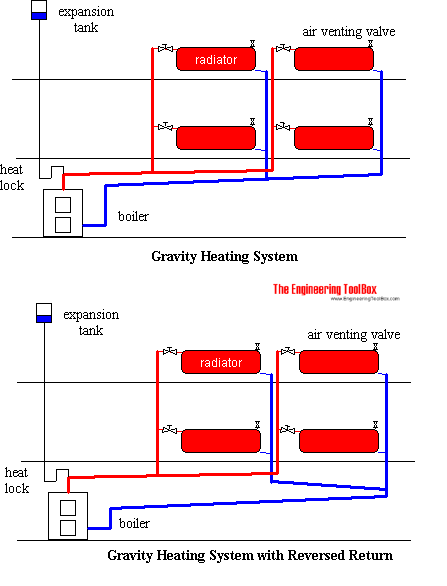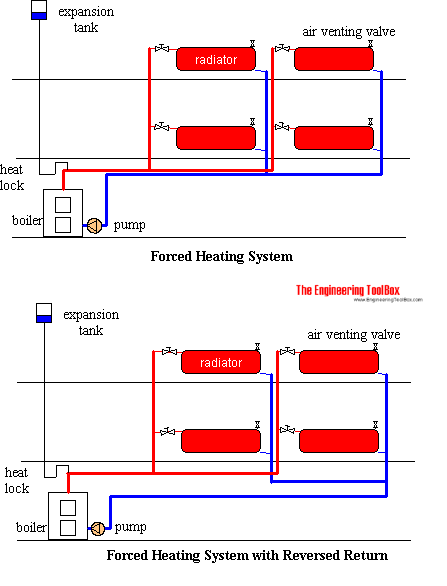Design of Hot Water Heating Systems
Calculate gravity and forced circulating hot water heating systems.
Gravity Circulating Heating System
In a hot water gravity heating system the circulation of water is a result of the density difference between hot water in the supply lines and cold water in the return lines.

The hot water tends to flow upwards and cold water tends to flow downwards. The elevation of the supply and return lines are therefore important for proper functionality.
The low differential pressure in the gravity system requires increased pipes and valves dimensions. The gravity system has a relative low heating capacity due to low medium temperature in heating elements.
The gravity system is simple and limited to use in smaller hot water heating systems.
With a reversed return pipe the length of the supply and return pipes for all heating elements are more or less the same. This makes it easier to select proper piping dimension for balanced flow.
The expansion of water (4.7% from 0 oC to 100 oC) can be collected in an open expansion tank above the rest of the system or inside a closed pressurized tank close to the boiler and safety valves. In modern systems closed tanks are preferred.
Forced Circulation Heating System
In forced systems the circulation is forced by pumps.

Water is circulated by the pump regardless of temperature forces between hot and cold water. It is not necessary to be careful with piping elevations. Pipes, valves and heating elements, radiators and air heaters, can be downsized because of higher flow and higher mean temperatures.
Forced circulation systems are in general the only practical alternative for larger systems.



